Welcome to Our Blogs
INCREASE YOUR AWARENESS
Follow along as we share valuable knowledge and content to enrich and empower your everyday life.
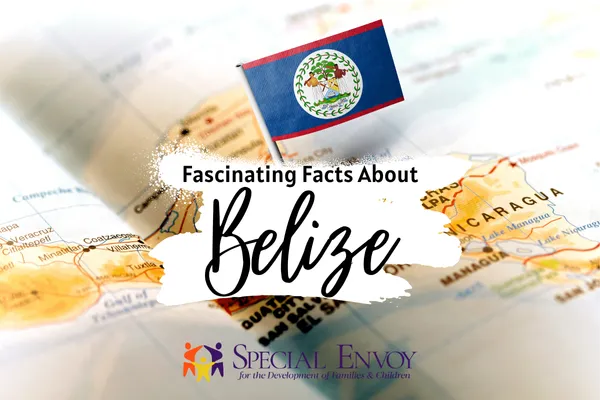
Fascinating Facts About Belize
Nestled on the eastern coast of Central America, Belize is a small but remarkably diverse nation. With lush rainforests, vibrant coral reefs, and a mosaic of cultures, it’s a place where nature, history, and identity intertwine in compelling ways. Below are many of the fascinating threads that make Belize unique.
The Name “Belize”
The origin of the name “Belize” is debated. Some sources suggest it comes from the Mayan word “belix” meaning “muddy water,” referring to the Belize River. Others believe it traces to the name of a mestizo or Garifuna settler, or possibly from the surname “Belise” (though documentary support is scarce). Over time, “Belize” became the Anglicized spelling.
When the territory was a British colony, it was known as British Honduras until 1973, when the name was officially changed to Belize. (Encyclopedia Britannica)
The Journey to Independence

Colonial Beginnings & British Rule
The area that is now Belize had been part of the sphere of influence of the Maya civilization long before European contact. (Kiddle)
European incursion began in the 16th and 17th centuries, but Spanish control was limited; the region remained relatively remote and marginal to colonial power. (Adventure Life)
English settlers and logwood cutters (and later mahogany loggers) established de facto presence; piracy and buccaneers also operated in the region. (Adventure Life)
In 1798, the Battle of St. George’s Caye saw local militia and British forces repel a Spanish attempt to assert control — a symbolic moment in asserting British dominance. (Encyclopedia Britannica)
The territory became a formal British Crown colony in 1862, under the name British Honduras. (Adventure Life)
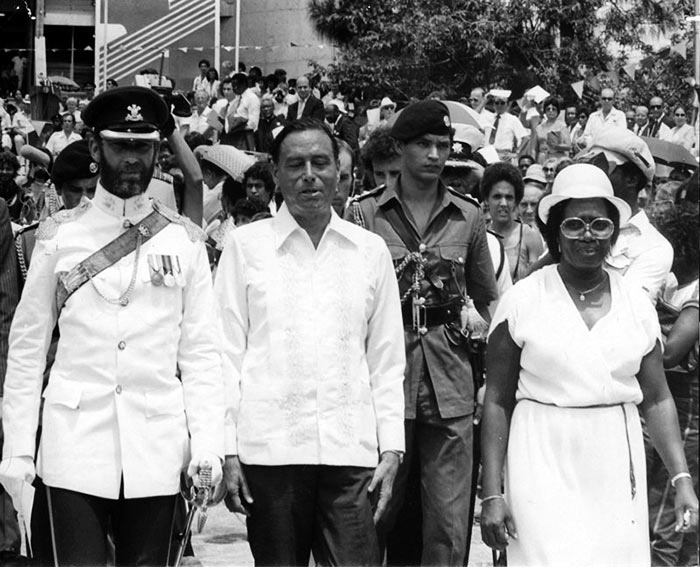
Path toward Self-Rule
In January 1964, Belize attained self-governance, allowing greater internal autonomy (though still under British sovereignty). (Wikipedia)
The drive for full independence was complicated by Guatemala’s long-standing territorial claim over Belize, which threatened stability and delayed full sovereignty. (Adventure Life)
On 21 September 1981, Belize formally became independent from the United Kingdom, while retaining ties through the Commonwealth. (Wikipedia)
To this day, Belize remains a constitutional monarchy with the British monarch (currently King Charles III) as head of state, represented locally by a Governor-General. (Wikipedia)
Belize celebrates “September Celebrations,” including Battle of St. George’s Caye Day (10 September) and Independence Day (21 September). (Wikipedia)
A key figure in Belize’s independence movement was George Cadle Price, often called the “Father of the Nation.” He led efforts toward self-government and independence and became the country’s first Prime Minister. (Wikipedia)
National Symbols

Flag
The Flag of Belize was officially adopted on 21 September 1981, the same day as independence. (Encyclopedia Britannica)
Its design: a royal blue field with narrow red stripes at the top and bottom edges, and a central white disk bearing the Coat of Arms. (Wikipedia)
The red stripes were included to represent the opposition party, ensuring the flag would not look identical to a political party’s. (Travel Belize)
The coat of arms features a mahogany tree, two men (one of Afro-Belizean descent, one mestizo) holding logging tools (axe, paddle, saw), a shield divided into sections, and a ship. The motto beneath reads “Sub Umbra Floreo” (“Under the shade I flourish”) — a nod to the forest industry and the protective canopy of the land. (Wikipedia)
Unusually, Belize is one of the few nations whose flag includes human figures. (Wikipedia)
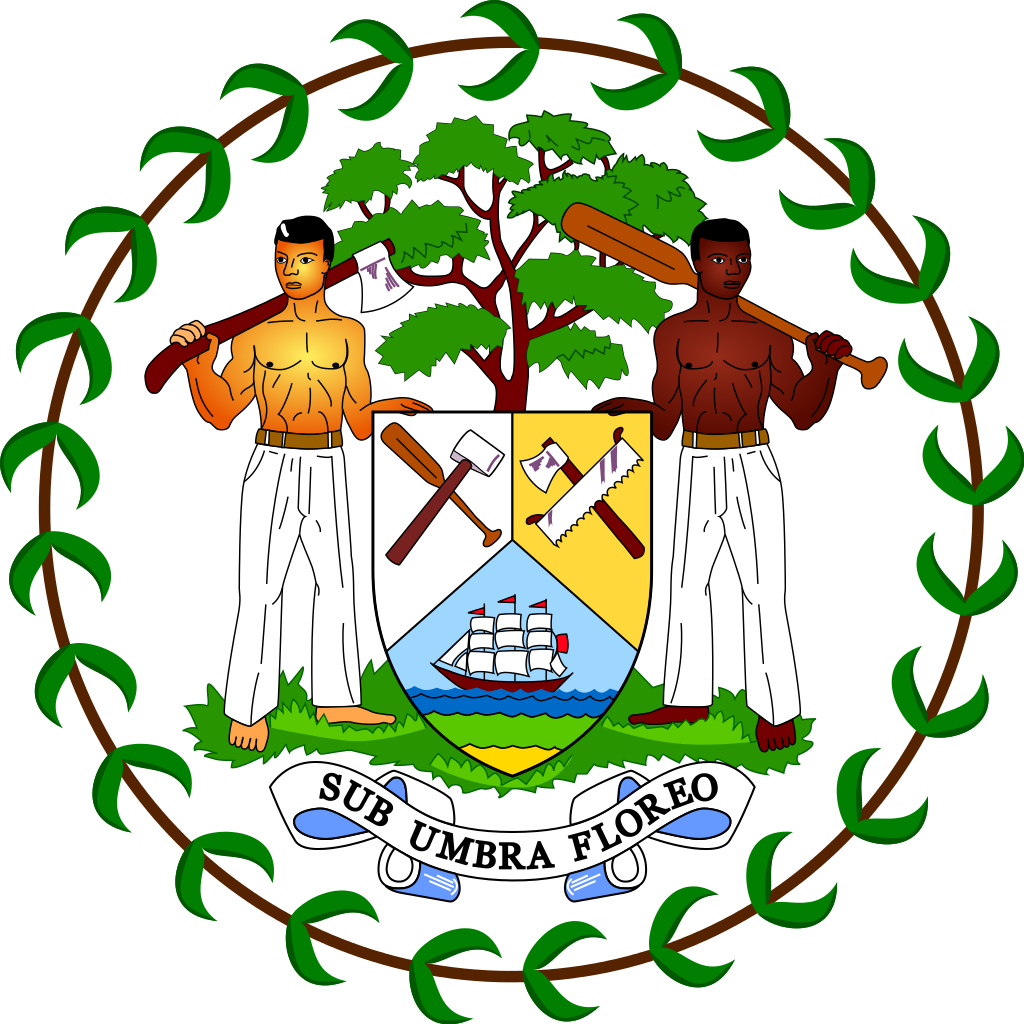
Coat of Arms
The Coat of Arms of Belize was standardized at independence (with minor modifications from the colonial design). (Wikipedia)
The 50-leaf wreath surrounding the shield references the year 1950, when political agitation (especially by the People’s United Party) formally began. (Wikipedia)
The shield’s upper divisions show tools of the logging trade; the lower division shows a ship at sea. (Wikipedia)
National Anthem
The national anthem is “Land of the Free”, lyrics by Samuel Alfred Haynes (1930) originally as “Land of the Gods”; the title/lyrics were adapted to “Free” and officially adopted at independence. (Wikipedia)
The music was composed by Selwyn Walford Young. (Belize.com)
The anthem opens:
O, Land of the Free by the Carib Sea,
Our manhood we pledge to thy liberty! … (Press Office)Some critics note that certain lines are gendered and that references to the “Baymen” (the early British loggers) may not reflect all cultural groups in Belize today. (Wikipedia)
National Prayer
Belize also has a National Prayer, read in public or at certain occasions, that reflects spiritual aspiration and national unity. (Press Office)
Its text begins:
Almighty and Eternal God, who through Jesus Christ
has revealed Your Glory to all nations, please protect
and preserve Belize, our beloved country. (Press Office)(and continues by invoking guidance, peace, justice, liberty, social harmony, useful knowledge, etc.) (Press Office)
The prayer is sometimes attributed to George Cadle Price (Premier/Prime Minister) before independence. (Belize.com)

Image Source: belizeatyourfingertips.com
Other Symbols
National Flower: the Black Orchid (Prosthechea cochleata, formerly Encyclia cochleata) is the floral emblem of Belize. (Belize.com)
National Tree: the Mahogany tree (Swietenia macrophylla) — historically central to the colonial economy. (Belize.com)
National Bird: the Keel-billed Toucan (Ramphastos sulfuratus). (Belize.com)
National Animal: Baird’s Tapir — the largest terrestrial mammal in the region, protected under Belize’s wildlife laws. (Belize.com)
These symbols speak to Belize’s natural heritage, forested environment, and multicultural identity.
The People, Cultures & Languages
One of Belize’s richest attributes is its cultural diversity.
Ethnic Groups & Cultural Heritage
Belize is sometimes viewed as more Caribbean in its cultural orientation than its Central American neighbors (due in part to the English language dominance and British colonial legacy). (Adventure Life)
The population comprises Mestizo (people of mixed Maya and Spanish/European descent), Creole (African descent mixed with European), Maya (various groups), Garifuna people, Afro-Belizeans, East Indians, Mennonites, Chinese Belizeans, and immigrants from other Latin American countries. (Adventure Life)
The Garifuna — descendants of West African and Caribbean indigenous people — have a significant presence, especially along the southern coast and towns like Dangriga. They celebrate Garifuna Settlement Day (19 November) to mark their arrival to Belize after exile from other Caribbean islands. (Wikipedia)
Migration in the 20th century (especially from neighboring Central American countries) shifted the demographic balance; Mestizos became the largest group. (Encyclopedia Britannica)
Belizeans are known for a laid-back, warm, community-oriented spirit, often embracing multiple cultural identities and bilingual/multilingual fluency. (Adventure Life)
Languages
The official language of Belize is English — the only country in Central America for which that is true. (Wikipedia)
Belizean Creole (Kriol) is widely spoken and serves as a lingua franca across ethnic lines. Many Belizeans are bilingual or trilingual. (Adventure Life)
Spanish is also widely spoken, especially among communities of mestizo or immigrant backgrounds. (Adventure Life)
Indigenous Mayan languages survive, such as Mopan, Q’eqchi’, and Yucatec Maya, especially in frontier and southern districts. (Wikipedia)
Garifuna is spoken among Garifuna communities; some also speak other ancestral languages or Creole versions. (Adventure Life)
Religious diversity also exists: Christianity (various denominations) is predominant, but there are small communities of Muslims, and other faith expressions. (Wikipedia)
Natural Wonders & Ecological Treasures
Belize is a paradise for nature lovers. Its varied ecosystems include mangroves, rainforests, rivers, caves, and coral reefs.
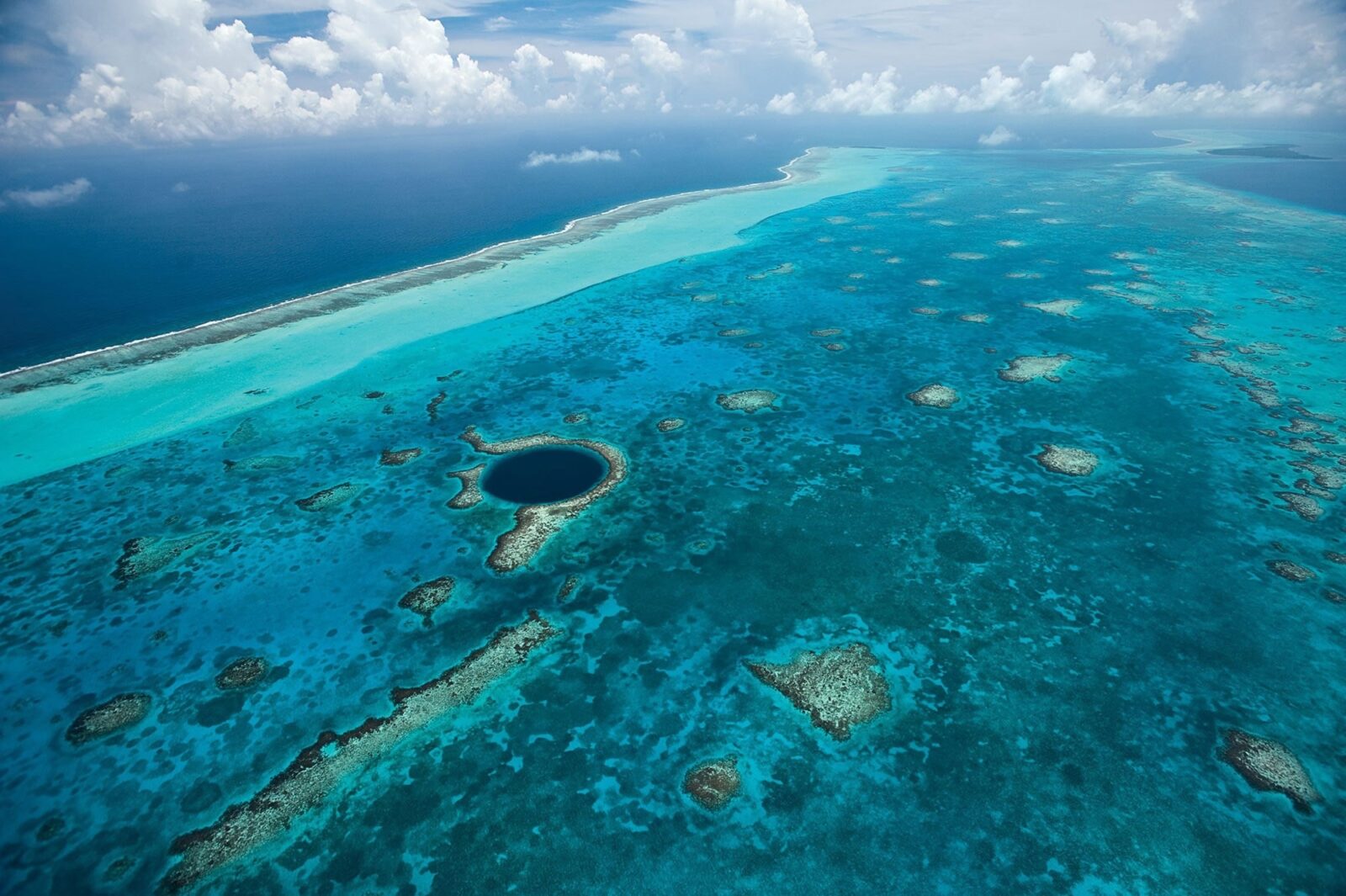
The Belize Barrier Reef & Marine Life
Belize is home to part of the Mesoamerican Barrier Reef System, the largest reef system in the Western Hemisphere. The Belize Barrier Reef stretches along its coast and is a UNESCO World Heritage site. (Wikipedia)
This reef supports a dazzling array of marine life, attracts snorkelers and divers, and is crucial for fisheries and coastal protection. (Wikipedia)
Famous dive sites include the Great Blue Hole — a giant submarine sinkhole — and many offshore atolls and cayes offering spectacular underwater scenery. (Wikipedia)
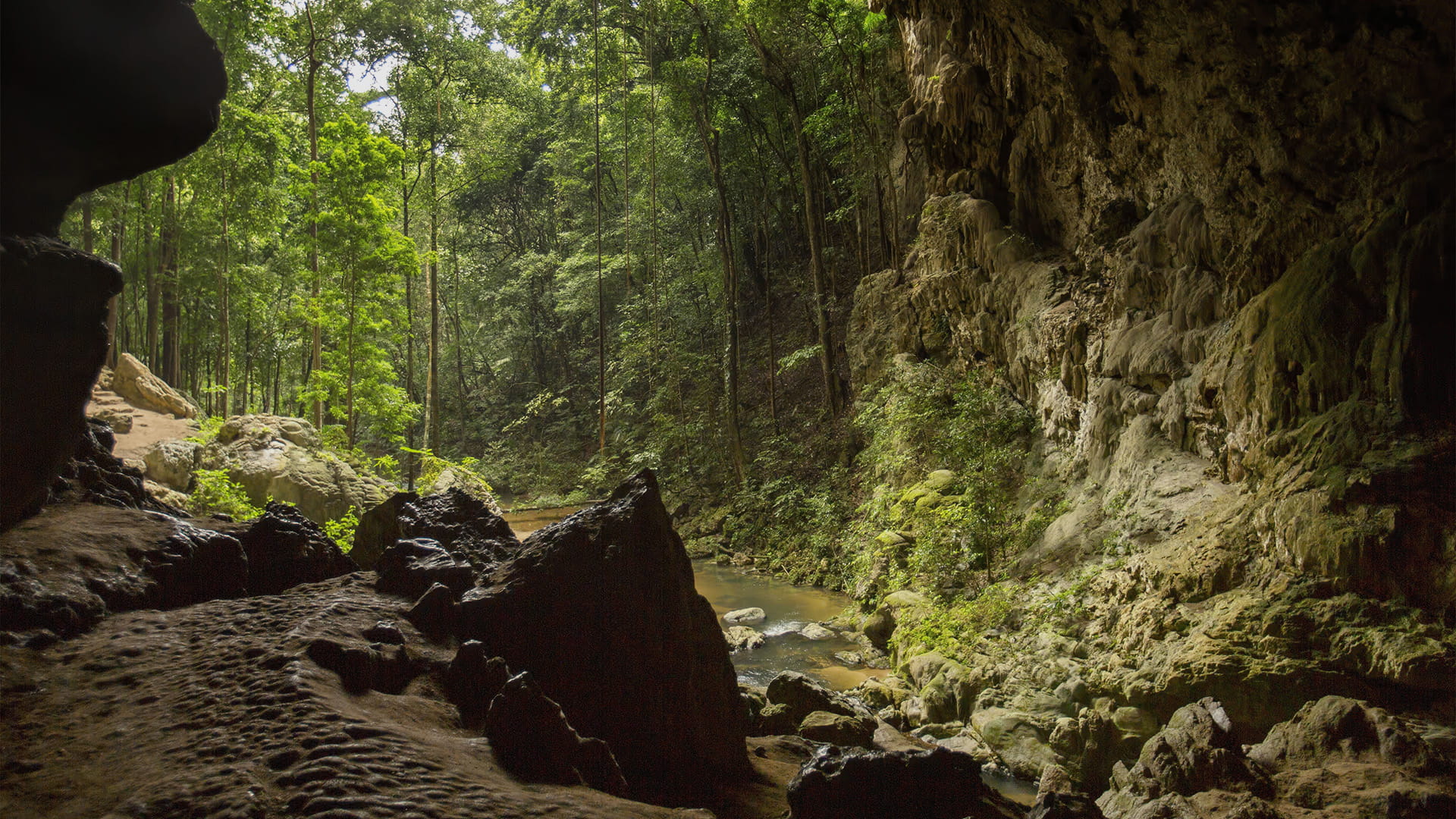
Rainforests, Mountains & Caves
Inland Belize is richly forested — over half of its land is forest cover. (Kiddle)
The Mountain Pine Ridge and other highland areas harbor rivers, waterfalls, and unique ecosystems.
Belize hosts extensive karst terrain (limestone), leading to caves, underground rivers, and sinkholes. These features invite exploration and are often linked to Maya archaeological sites. (Adventure Life)
Wildlife includes jaguars, howler monkeys, tapirs, bird species (including toucans, parrots), and more.

Rivers & Watersheds
Belize has a dense river network. Rivers like the Belize River, Macal River, and Mopan River are vital for ecology, transportation, and tourism.
The Sarstoon River marks part of the southern border with Guatemala.
Biodiversity & Conservation
Belize is part of the Mesoamerican Biological Corridor, a critical region for species migration and genetic diversity across Central America. (Wikipedia)
Protected areas (reserves, national parks, marine sanctuaries) help conserve habitats and species.
Sustainable and eco-tourism are increasingly central to Belize’s economy, balancing development and conservation.
Culture, Celebrations & Identity
Festivals & National Holidays
As mentioned, September Celebrations (Battle Day + Independence) are major national events with parades, pageants, carnivals, and cultural performances. (Wikipedia)
Garifuna Settlement Day (19 November) celebrates Garifuna culture, including drumming, dancing, food, and heritage. (Wikipedia)
Local festivals celebrate Mayan heritage, Creole music (e.g. punta), and community traditions.
Arts, Music & Cuisine
Punta music (of Garifuna origin) is widely loved; other musical styles include Brukdown, Garifuna drum music, reggae, and soca influences.
Belizean cuisine is eclectic: rice and beans, stewed chicken, escabeche, tamales, fry jacks, and coastal seafood are staples. Influences blend Maya, Creole, Garifuna, Mestizo, and immigrant flavors. (Adventure Life)
Craftsmanship includes wood carving, weaving, lacquer work, ceramics, and traditional dress and ornamentation in indigenous and Afro-Caribbean communities.
Archaeology is also an important cultural dimension — Maya ruins such as Caracol, Xunantunich, Cahal Pech, Lamanai, and others attract visitors and connect Belizeans with ancient heritage. (Adventure Life)
Identity & National Narrative
Belize’s identity narrative often emphasizes unity in diversity — multiple ethnic heritages, languages, and histories coming together under a Belizean identity.
The choice of national symbols, the preservation of indigenous languages, and civic education emphasize pride, shared destiny, and environmental stewardship.
Some Additional Fun & Thought-Provoking Facts
Belize is one of the least densely populated countries in Central America, with a relatively small population (around 397,000 as of the 2022 census) spread over ~22,966 km². (Wikipedia)
It is the only mainland Central American country with English as the official language and is a member of the Commonwealth and Caribbean Community (CARICOM). (Kiddle)
Belize features only two paved highways (connecting to Mexico and Guatemala); many interior routes remain unpaved. (Adventure Life)
The country has also maintained relative political stability in a region with many tumultuous histories. (Encyclopedia Britannica)
Because Belize’s landscapes are still relatively undisturbed, it’s a magnet for researchers, conservationists, and eco-tourists.
The anthem “Land of the Free” was once entitled “Land of the Gods,” but lines were modified (Gods → Free) amid sensitivities about language. (Belize.com)
Conclusion
Belize may be small in size, but it is rich in complexity and wonder. From its long colonial path to independence, to its evolving national symbols, to the multiethnic tapestry of its society, Belize offers a living case study in how history, nature, and identity intertwine. Whether you're drawn by its coral reefs, rainforest trails, Maya ruins, or the warmth of its people, Belize invites exploration not just of place, but of a national story still unfolding.
Sources:
“National Anthem & Prayer.” Government of Belize Press Office, https://www.pressoffice.gov.bz/national-anthem-prayer/.
“Belize.” Wikipedia, Wikimedia Foundation, latest revision.
“Belize | History, Capital, Language, Map, Flag, & Facts.” Britannica, https://www.britannica.com/place/Belize.
“Flag of Belize | Colors, Meaning & History.” Britannica, https://www.britannica.com/topic/flag-of-Belize.
“Land of the Free (anthem).” Wikipedia, Wikimedia Foundation.
“National Symbols Of Belize.” Belize River Lodge, https://www.belizeriverlodge.com/eco-adventure-tour-dscriptions/national-symbols-of-belize/.
“The National Prayer of Belize.” MyBelize.net, https://www.mybelize.net/about-belize/national-symbols/belize-national-prayer/.
“The National Prayer & Origins.” Travel Belize, https://www.travelbelize.org/blog/the-origins-of-the-belize-flag/.
“Garifuna Settlement Day.” Wikipedia, Wikimedia Foundation.
“September Celebrations.” Wikipedia, Wikimedia Foundation.
“George Cadle Price.” Wikipedia, Wikimedia Foundation.
@ Copyright 2025 - Special Envoy for the Development of Families & Children| All rights reserved

